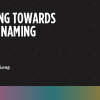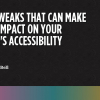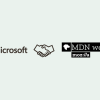
This excellent piece breaks down many of the issues around what it means (in the larger, societal sense) to store information digitally.
In the 21st century, more and more information is “born digital” and will stay that way, prone to decay or disappearance as servers, software, Web technologies, and computer languages break down. The task of internet archivists has developed a significance far beyond what anyone could have imagined in 2001, when the Internet Archive first cranked up the Wayback Machine and began collecting Web pages…






